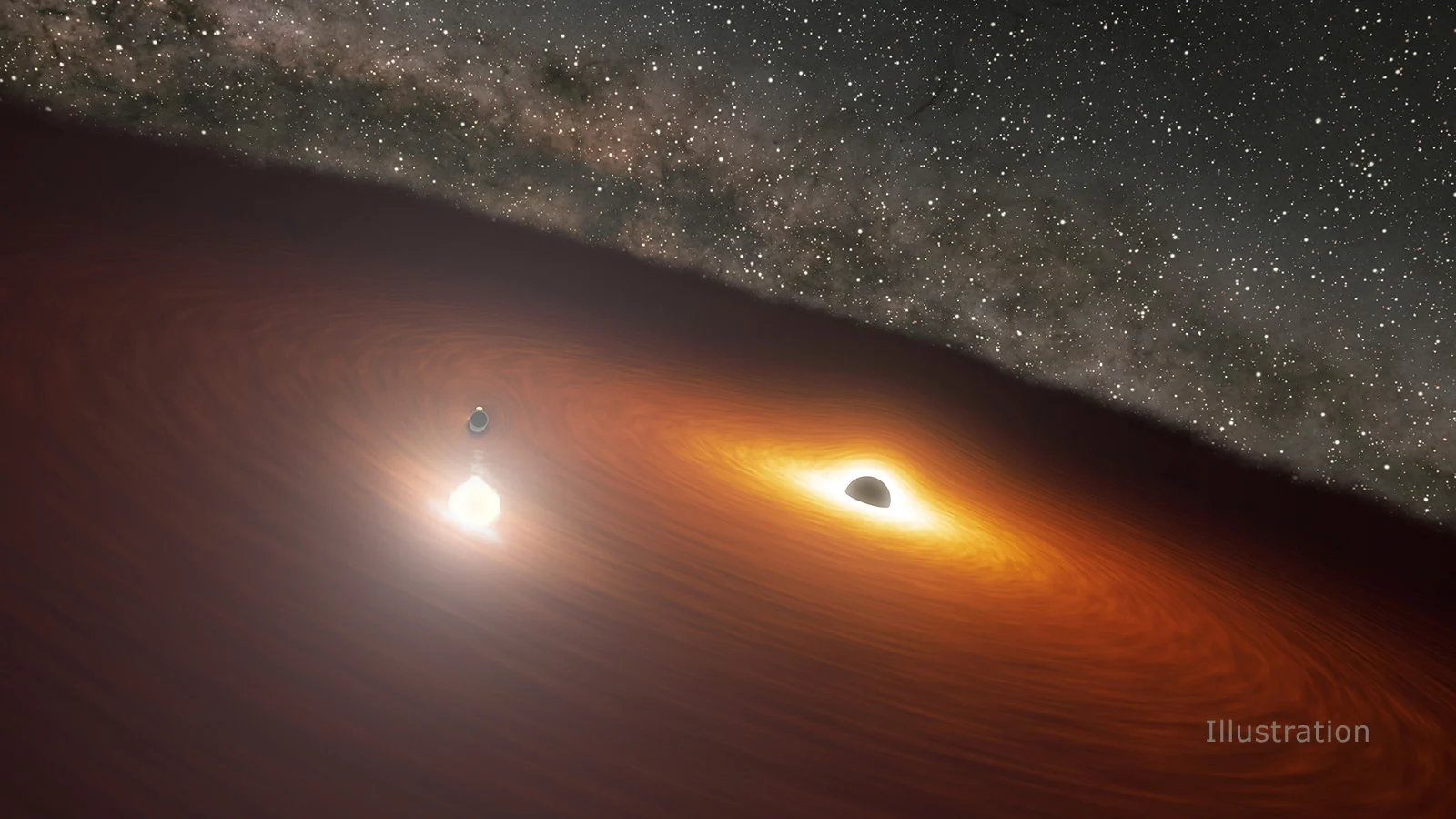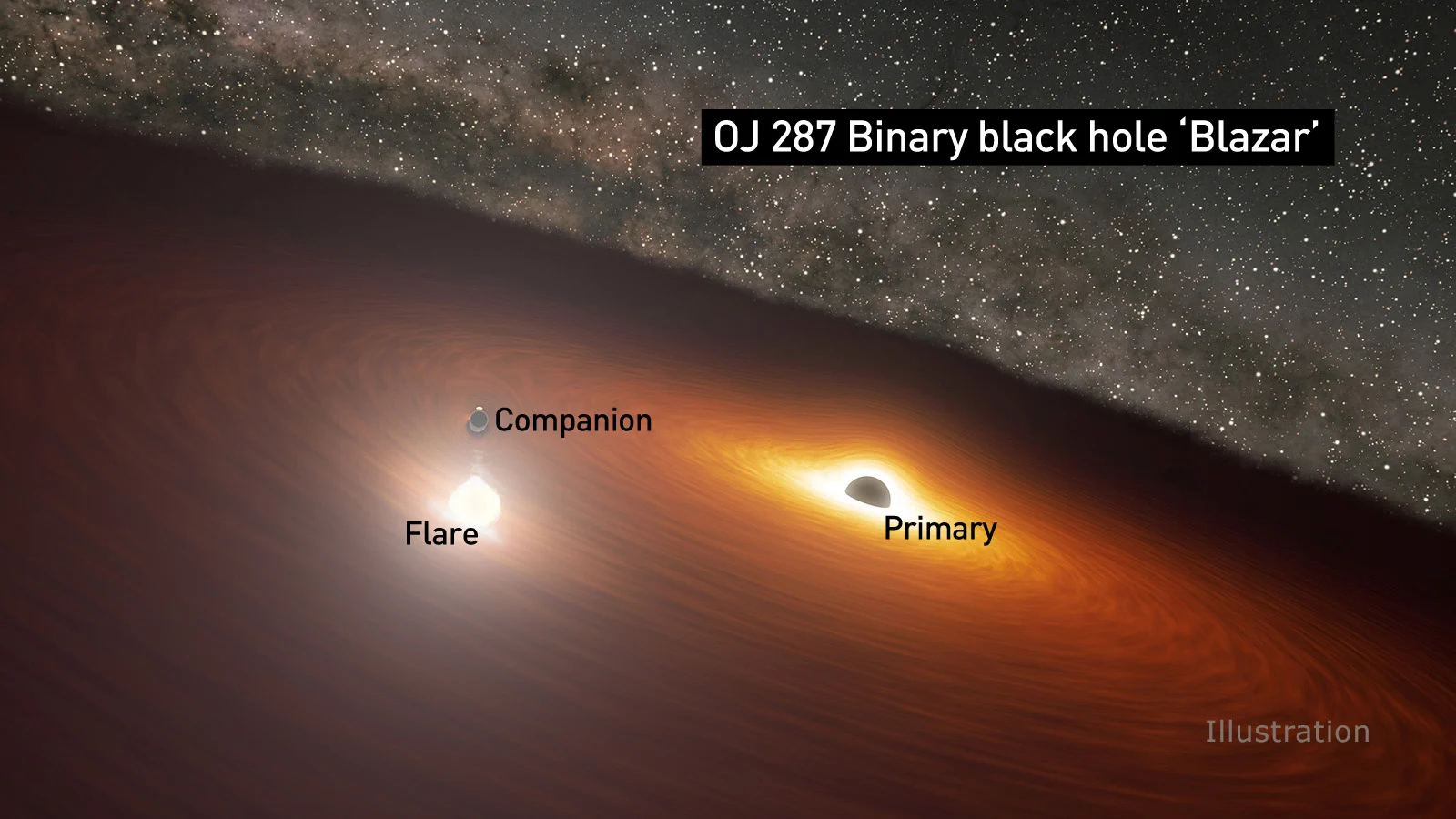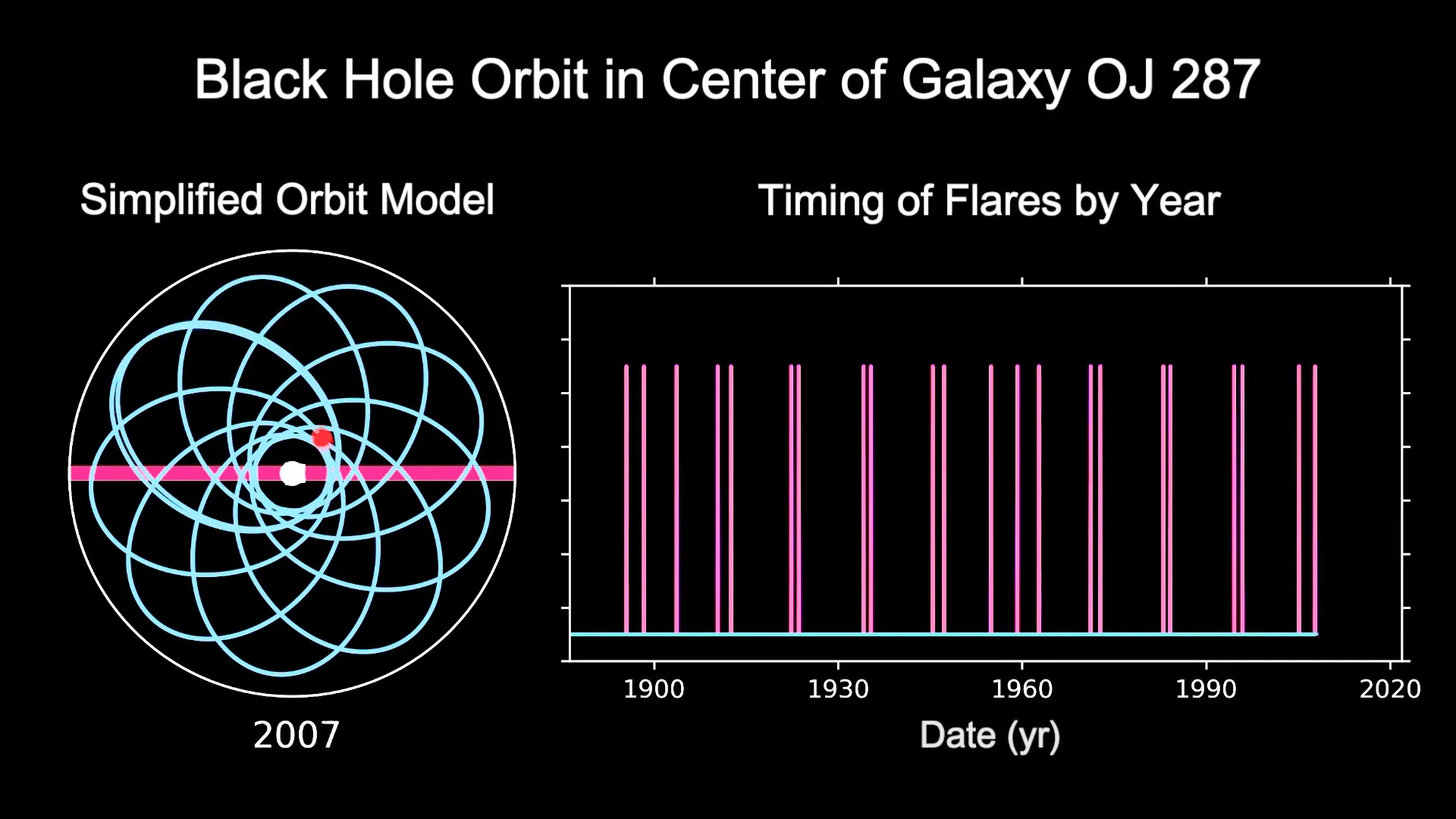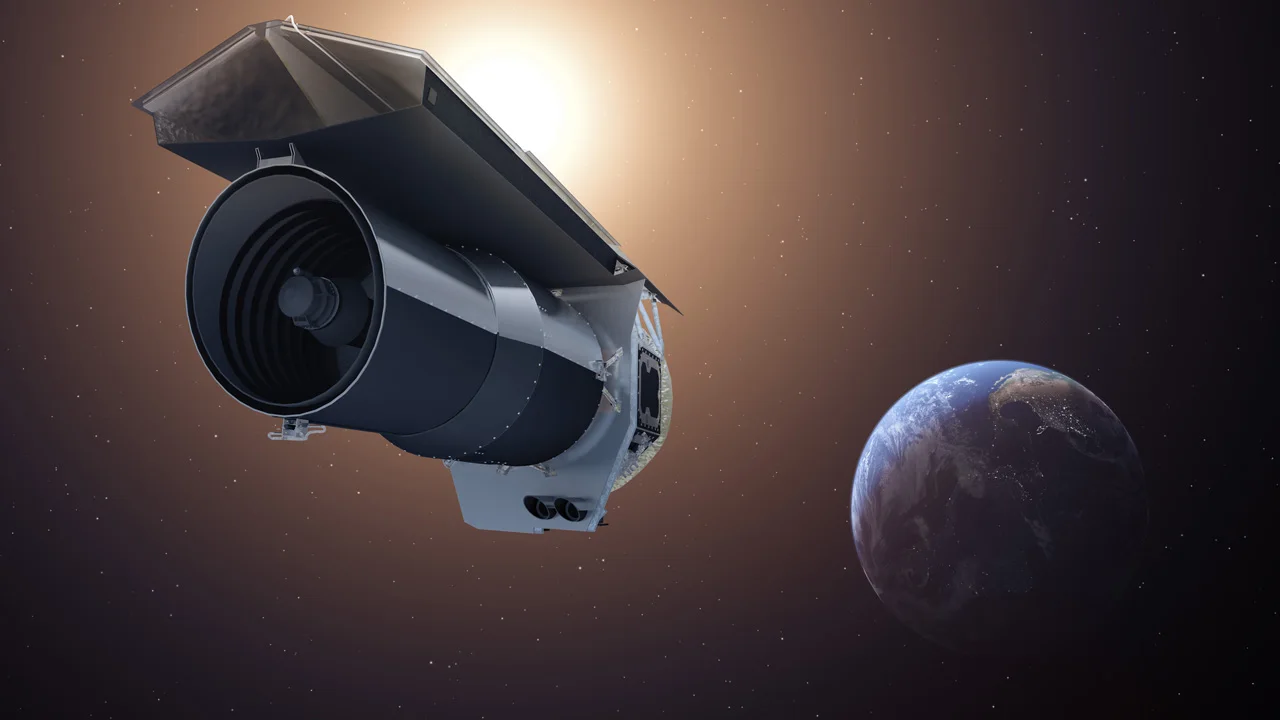
Black hole dance partners blast out flares brighter than a trillion stars
After NASA's Spitzer Space Telescope captured an intense flare, right on cue in 2019, astronomers can finally claim to have solved this mystery
For over one hundred years, astronomers have been puzzling over a mysterious source of brilliant flares, far out in the universe. Now, thanks to a combination of hard work and excellent timing, they have the answer to this mystery.
Since the late 1800s, telescopes have been capturing an unusual series of bright flashes coming from OJ 287, a galaxy roughly 3.5 billion light-years away. OJ 287 is known as a 'blazar' since it has an active black hole at its core, which emits energy and light as it gobbles down matter surrounding it. The unusual thing about OJ 287 is the seemingly random timing of the flares. While astronomers have timed them to show that they can expect two flashes every 12 years, their exact timing within that period is never the same!
Over decades of studying this strange blazar, researchers have worked out the most likely explanation for how it behaves. Instead of playing host to just one supermassive black hole at its core, OJ 287 must have a binary pair - a larger primary orbited by a smaller companion.
To match what astronomers see from this pair, the primary supermassive black hole must be one of the largest ever discovered, weighing in at 18 billion times more massive than our Sun! The smaller companion, which orbits the primary once every 12 years, has an estimated mass of around 100 million Suns. For comparison, Sagittarius A*, the supermassive black hole at the core of the Milky Way, is "only" about 4 million times the mass of the Sun.
There is a third vital component of this system, as well. For the blazar to blast out radiation, there must be an immense accretion disk of gas and dust surrounding the primary black hole.

This artist's conception drawing shows two massive black holes in the OJ 287 galaxy, with a large accretion disk surrounding the pair. When the smaller black hole crashes through the accretion disk, light flares out, brighter than a trillion stars. Credit: NASA/JPL-Caltech
In the case of OJ 287, though, the explanation of the strange series of flashes requires a bit more explanation than simply matter falling into the primary. Instead, each flash of light is thought to be a result of the smaller companion crashing through the accretion disk as it orbits. The influence of the black hole's gravity would heat the disk's material to extreme temperatures, causing it to emit intense radiation and light.
The reason the flares are emitted in their strange intermittent pattern is apparently due to a unique 'spirographic' dance the companion black hole performs as it orbits the primary. Each orbit traces out a long ellipse where the companion passes through the accretion disk twice on each pass. No two orbits are alike, however, due to how they 'precess' around the primary.

This simulation model of the orbit of the OJ 287 companion reveals the spirographic pattern it traces out as it precesses around the primary. Credit: Dey, et al./NASA/JPL-Caltech
According to NASA, over the past decade, teams of astronomers have devised different models to simulate how this binary pair behaves. The key was building a model of the system that not only matched the timing of past flares but could also accurately predict when the next one would take place. Knowing the date and time of the next flash would allow astronomers to aim every available telescope to capture the event.
Earlier models could pin a prediction down to within two or three weeks. In 2018, a team led by Lankeswar Dey, a graduate student at the Tata Institute of Fundamental Research in Mumbai, India, devised a new model. According to their study, it could predict the next flash to within just 4 hours!
Tracking every one of the 22 flares seen so far, up to 2007, the new model spit out a result of July 31, 2019, for the next one.
The timing of this next flash brought up an unfortunate problem, though. According to NASA, to observe OJ 287 at that time, telescopes on or around Earth would need to look straight through the Sun to see it! Since that was impossible, they were nearly out of luck. One telescope was available, though.

This artist conception drawing shows the Spitzer Space Telescope trailing behind Earth. Credit: NASA/JPL-Caltech
NASA's Spitzer Space Telescope, which had been taking infrared imagery of the universe for over 16 years, was trailing well behind Earth, over a quarter of the way around the Sun along Earth's orbit.

This infographic shows the location of the Spitzer Space Telescope over time. Credit: NASA/JPL-Caltech
From there, Spitzer was in just the right position to see past the Sun and watch OJ 287, and the flare from the black hole binary showed up right on cue!
"When I first checked the visibility of OJ 287, I was shocked to find that it became visible to Spitzer right on the day when the next flare was predicted to occur," Seppo Laine, who headed up Spitzer's observations of the system from Caltech/IPAC in Pasadena, Calif., told NASA. "It was extremely fortunate that we would be able to capture the peak of this flare with Spitzer, because no other human-made instruments were capable of achieving this feat at that specific point in time."
With this accurate prediction by Dey's team, they can now be confident that they correctly worked out the companion black hole's strange spirographic orbital pattern. From here, their model can now tell them even more about this black hole binary and also test the fundamental nature of black holes.
Sources: NASA JPL






